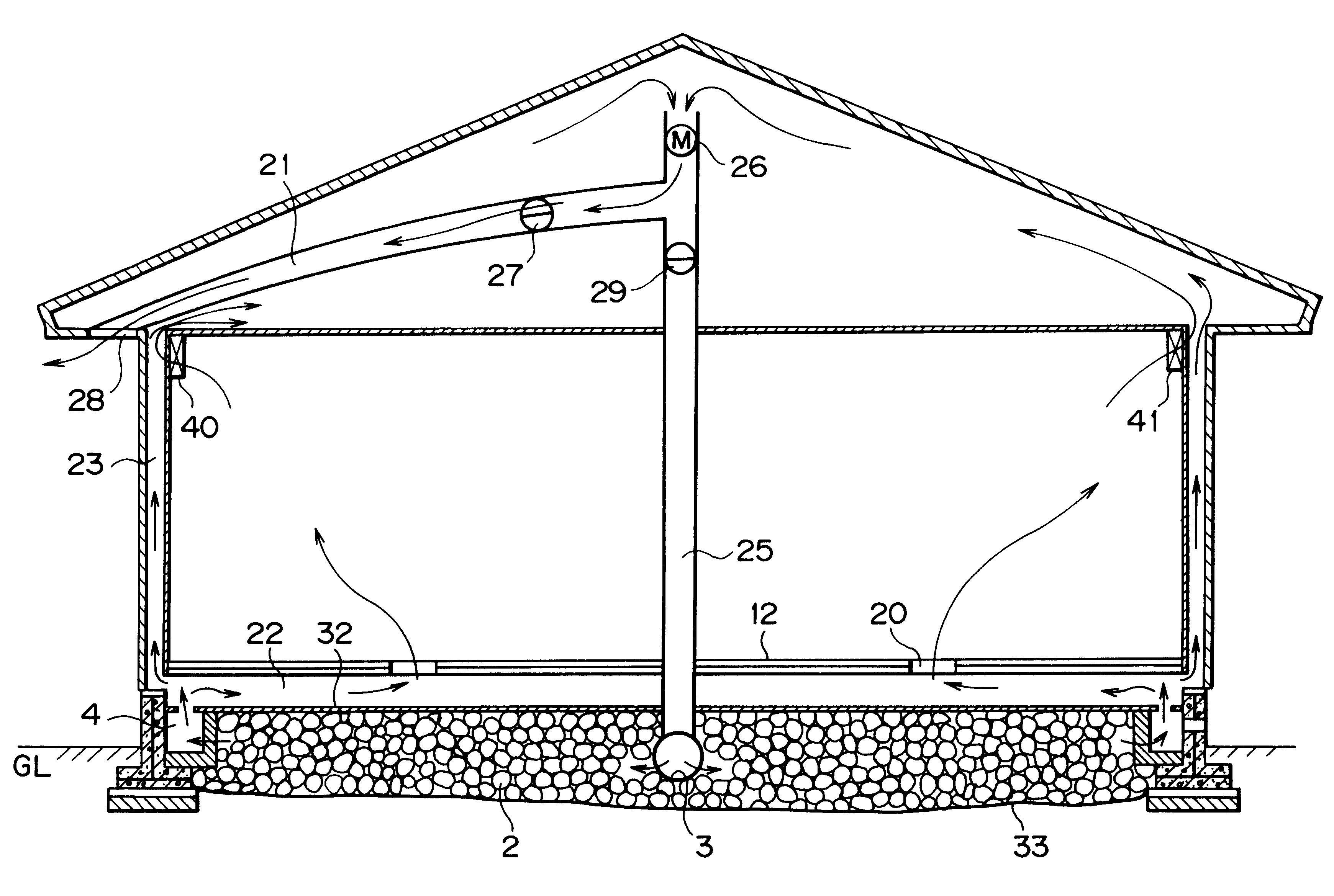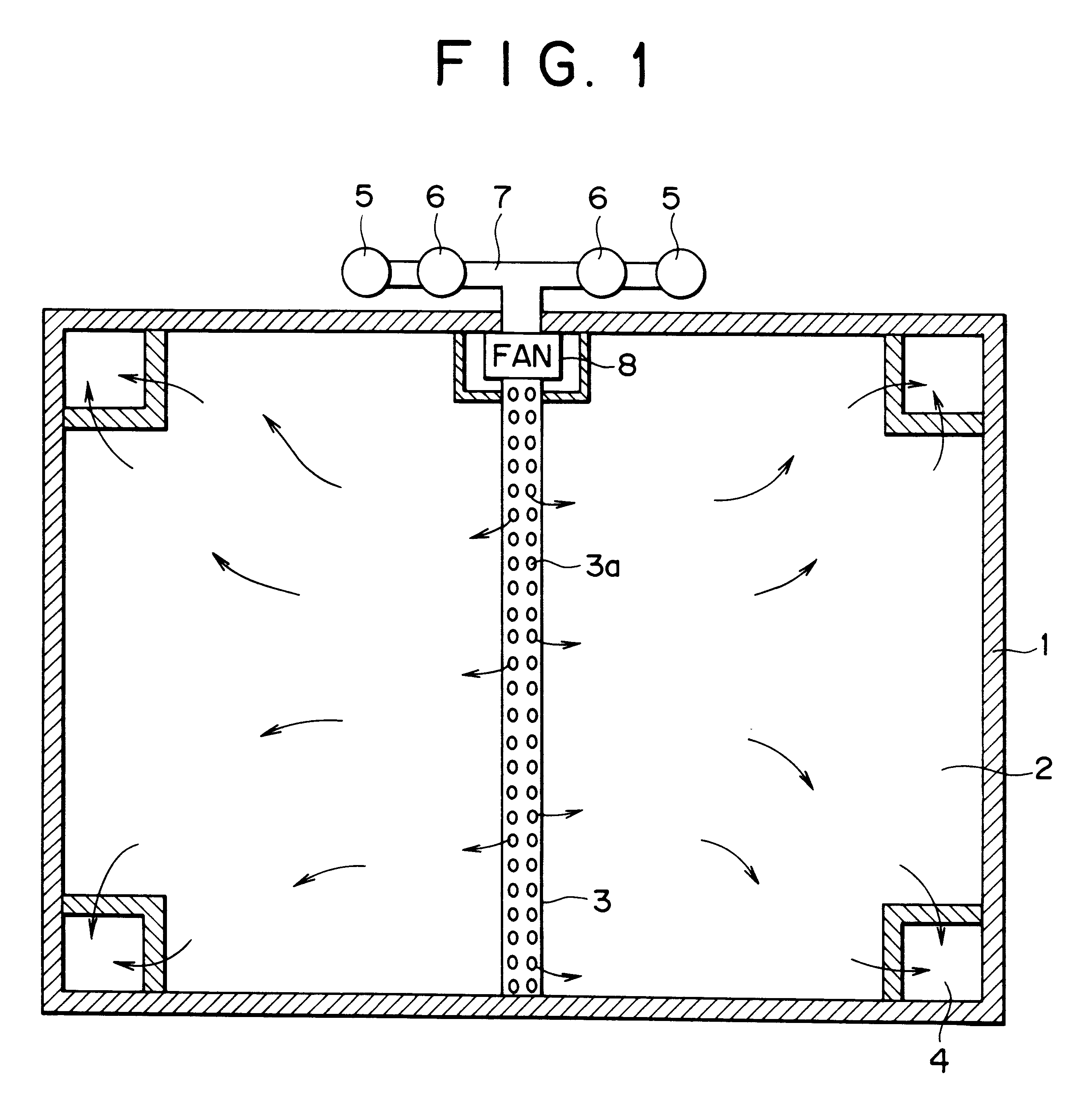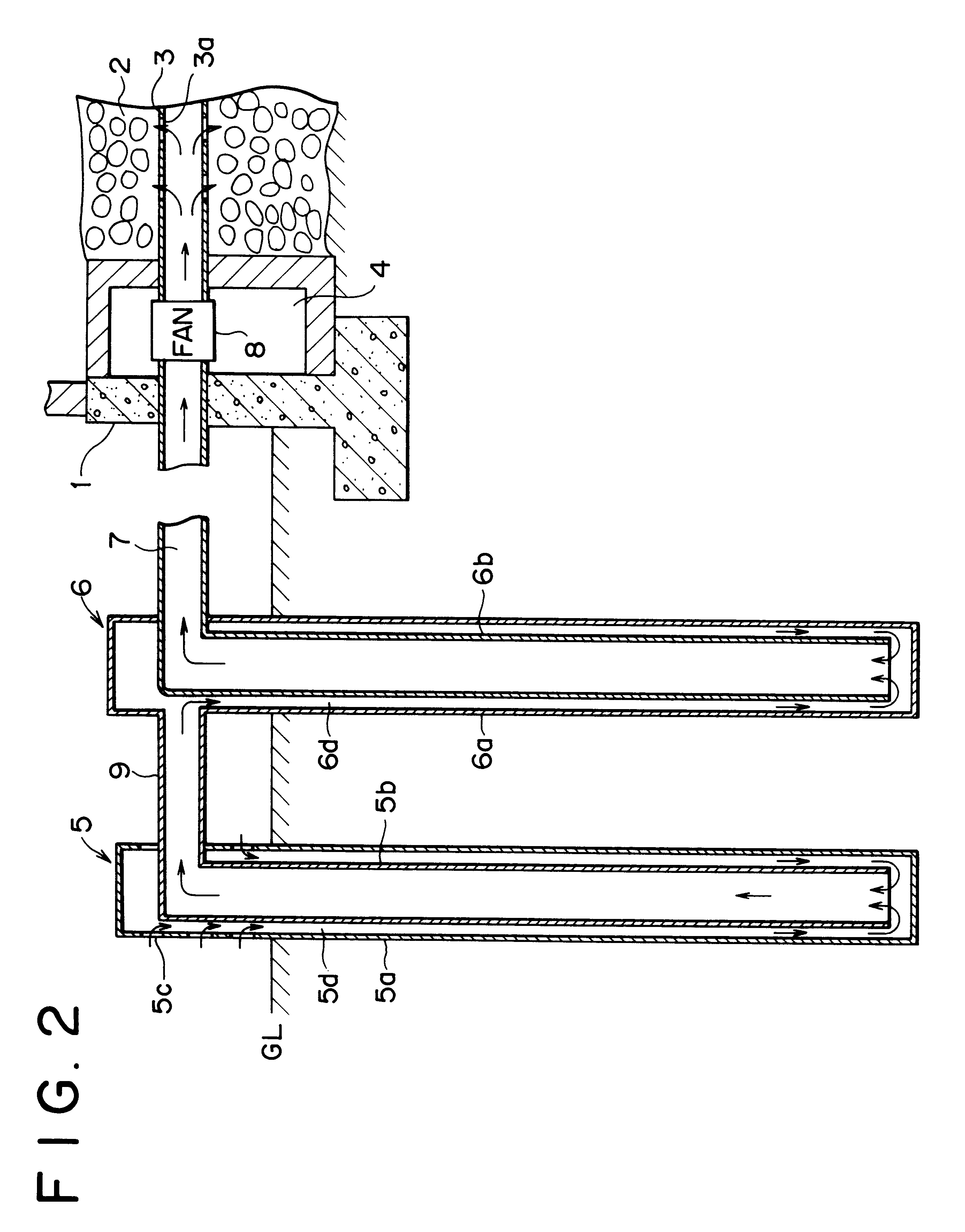Building air conditioning system using geothermal energy
a building air conditioning and geothermal energy technology, applied in the direction of domestic cooling apparatus, greenhouse gas reduction, heating types, etc., can solve the problems of insufficient utilization of geothermal energy for air conditioning, inability to consider humidity control and air cleaning of air from outside, and extreme limitations of heat conduction using geothermal energy
- Summary
- Abstract
- Description
- Claims
- Application Information
AI Technical Summary
Problems solved by technology
Method used
Image
Examples
first embodiment
FIG. 1 is a horizontal sectional view for illustrating a first embodiment according to the invention. Referring to FIG. 1, a reference numeral 1 is an inverted T-shaped foundation of the building made of concrete in a cross section, which foundation is formed on an outer periphery of a building, and a reference numeral 2 is a cobble stone layer installed under the floor of the building (the individual cobble stone is omitted in illustration in FIG. 1) provided by filling a number of cobble stones within a space under the floor surrounded by this foundation 1, a floor of the building and the ground. For example, height of the cobble stone layer under the floor 2 is about 400 mm.
Moreover, in FIG. 1, a reference numeral 3 is a perforated pipe which is inserted into the approximately central portion of the inside of the cobble stone layer under the floor 2 and on which numerous holes 3a are formed. Air from underground pipes 5 and 6 described below is introduced into this perforated pip...
second embodiment
Therefore, even though, in general, it is said that thermal conductivity of the pipe made of plastic is low as compared with that of the pipe made of metal, since the outer pipe 51 is formed widely in the surface area and thinly in thickness as mentioned above, geothermal energy can be transmitted to the inside of the outer pipe 51 easily despite of using the wall made of plastic in the
Moreover, a plurality of openings (holes) 51a for allowing air from the outdoors to flow thereinto are formed on the upper of the spiral pipe for the outside 51 in FIG. 8(a).
Moreover, a reference numeral 52 is a spiral-shape belt made of metal such as aluminum or plastic in FIG. 8(a). This spiral-shape belt 52 is formed by forming an elongate belt-shaped (or ribbon-shaped) sheet made of aluminum into a spiral shape (a coil shape). This spiral-shape belt 52 is used in a manner to be arranged on the inside of the outer pipe 51 so as to contact with the inner wall surface of said outer pipe 51.
Therefore,...
PUM
 Login to View More
Login to View More Abstract
Description
Claims
Application Information
 Login to View More
Login to View More - R&D
- Intellectual Property
- Life Sciences
- Materials
- Tech Scout
- Unparalleled Data Quality
- Higher Quality Content
- 60% Fewer Hallucinations
Browse by: Latest US Patents, China's latest patents, Technical Efficacy Thesaurus, Application Domain, Technology Topic, Popular Technical Reports.
© 2025 PatSnap. All rights reserved.Legal|Privacy policy|Modern Slavery Act Transparency Statement|Sitemap|About US| Contact US: help@patsnap.com



